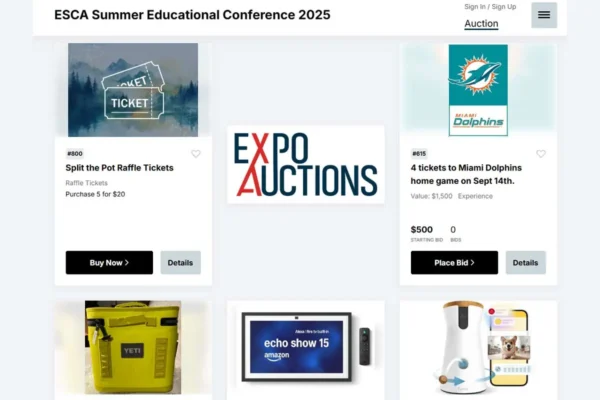The Consumer Electronics Association (CEA) and the Institute of Scrap Recycling Industries Inc. (ISRI) recently announced a technical “CRT Challenge” to identify financially viable, environmentally-conscious proposals for using recycled cathode ray tube (CRT) glass.
As CRT technology has been displaced in the market by liquid crystal display (LCD), light-emitting diode (LED) and plasma displays, the consumer electronics and recycling industries are working to find inventive and creative new ways to recycle old CRT glass. Over the coming years, more than two billion pounds of legacy CRT TVs and monitors are expected to enter the recycling stream. And with demand for old CRT glass to make new CRT glass waning, there is an increased need for new environmentally-sound, economically sustainable uses for this material.
“The CRT challenge is a crowd-sourced technical competition to find new uses for old CRT glass,” said Walter Alcorn, vice president of environmental affairs and industry sustainability, CEA. “The consumer electronics industry is fully committed to eCycling and this CRT challenge has the potential to uncover new, innovative electronics recycling.”
CEA and ISRI will accept submissions for the CRT Challenge until June 30, 2013, at innocentive.com/ar/challenge/9933317. The winning solution will be chosen based on economic and environmental benefits, and CEA will award $10,000 to the winner. CEA and ISRI will publicize and share solutions with manufacturers, retailers and recyclers, and encourage implementation.
“ISRI is very excited to be co-sponsoring the CRT Challenge with the Consumer Electronics Association,” said Robin Wiener, president, ISRI. “The Challenge presents a great opportunity to expand and develop new markets for recycled CRT glass and help recyclers as the industry transitions from CRTs to newer display technologies.”
For many years, CRTs were the technology of choice in the display industry, used in everything from television and computer screens to diagnostic equipment displays. In recent years, demand for CRTs has dropped drastically as newer LCD, LED and plasma technologies, which are more compact and use less energy, have become more affordable and widely available. As new CRT displays have been the primary destination for recovered CRT glass, the end-use markets for CRT glass have decreased considerably.
Mathy Stanislaus, assistant administrator of the Environmental Protection Agency’s Office of Solid Waste and Emergency Response, said, “The EPA recognizes that the reduced number of facilities that accept processed CRT glass is posing challenges for recycling this material.
“EPA applauds the Consumer Electronics Association and the Institute of Scrap Recycling Industries Inc.’s CRT Challenge as it encourages collaboration and innovation to address this growing issue and seeks economically and environmentally viable solutions.”
CEA issued its first CRT Challenge in 2011 and it yielded three winners: Mario Rosato, who proposed a closed-loop process for separating the lead from the glass in a form with high market value for a variety of industries; Nulife Glass Processing Ltd, which proposed a solution that utilizes an extremely energy efficient electrically heated furnace, uniquely designed to produce minimal emissions; and Robert Kirbym who submitted an idea for combining CRT glass with cement to create tile and bricks that are tested, labeled and sold specifically for applications where lead shielding is required, such as X-ray and fluoroscopy rooms.
CEA also manages the consumer electronics industry’s eCycling Leadership Initiative, an industry-led effort to responsibly recycle one billion pounds of electronics annually through improved eCycling infrastructure and partnerships. The initiative also seeks to shore up consumer education and report on progress towards achievement of initiative goals. To find a local recycling center near you, visit: GreenerGadgets.org.
About CEA:
The Consumer Electronics Association (CEA) is the preeminent trade association promoting growth in the $209 billion U.S. consumer electronics industry. More than 2,000 companies enjoy the benefits of CEA membership, including legislative advocacy, market research, technical training and education, industry promotion, standards development and the fostering of business and strategic relationships. CEA also owns and produces the International CES – The Global Stage for Innovation. All profits from CES are reinvested into CEA’s industry services. Visit CEA online: www.CE.org and www.DeclareInnovation.com.
About ISRI:
The Institute of Scrap Recycling Industries, Inc. (ISRI) is the Voice of the Recycling Industry™. ISRI represents more than 1,700 companies in 21 chapters nationwide that process, broker and industrially consume scrap commodities, including metals, paper, plastics, glass, rubber, electronics and textiles. With headquarters in Washington, DC, the Institute provides education, advocacy, and compliance training, and promotes public awareness of the vital role recycling plays in the U.S. economy, global trade, the environment and sustainable development. For more information about ISRI, visit www.ISRI.org.





























